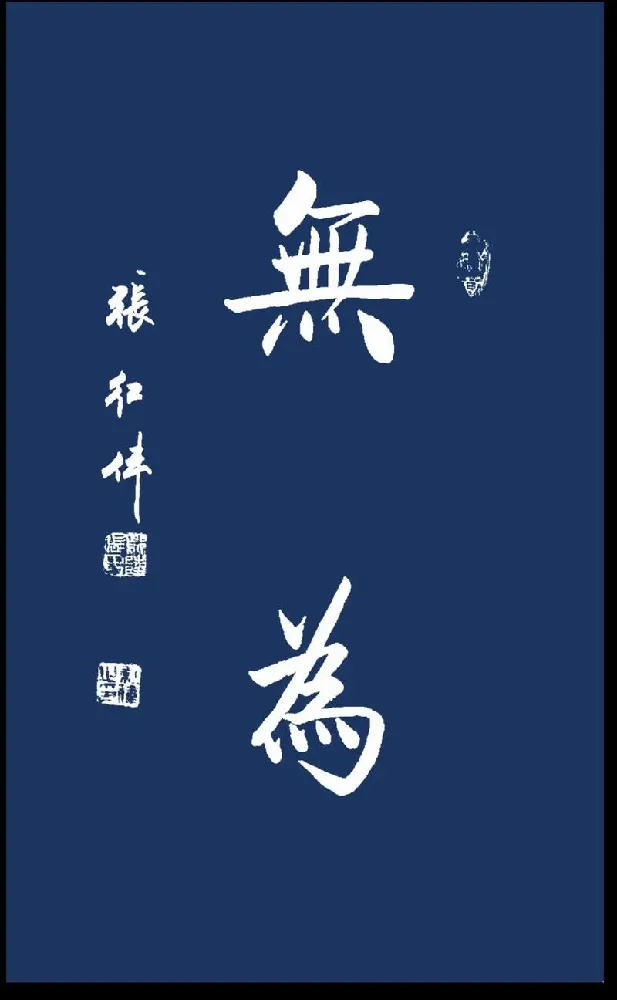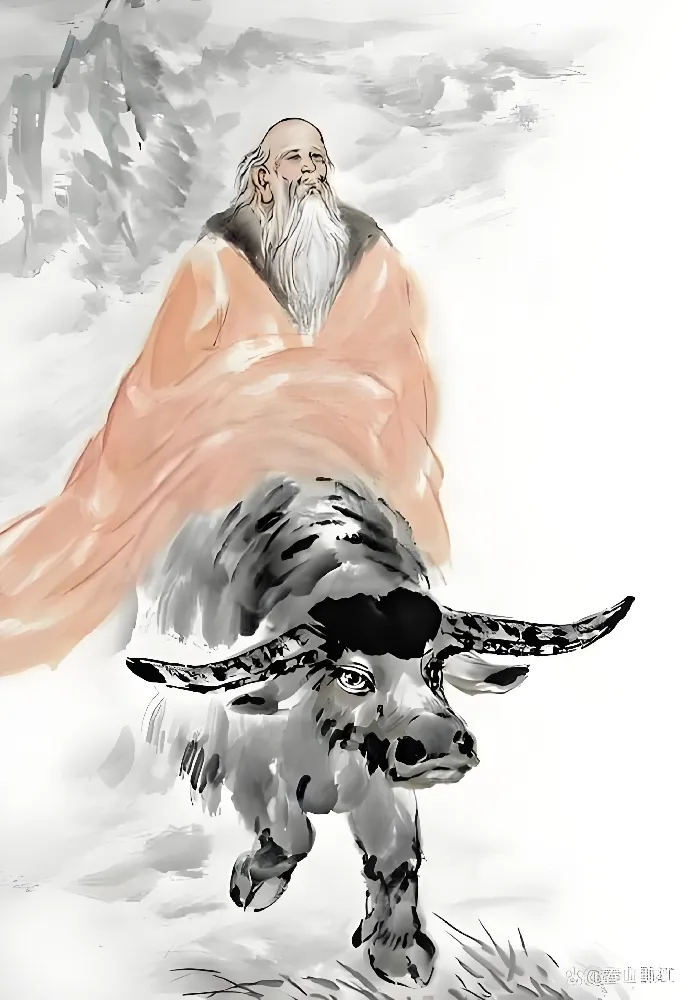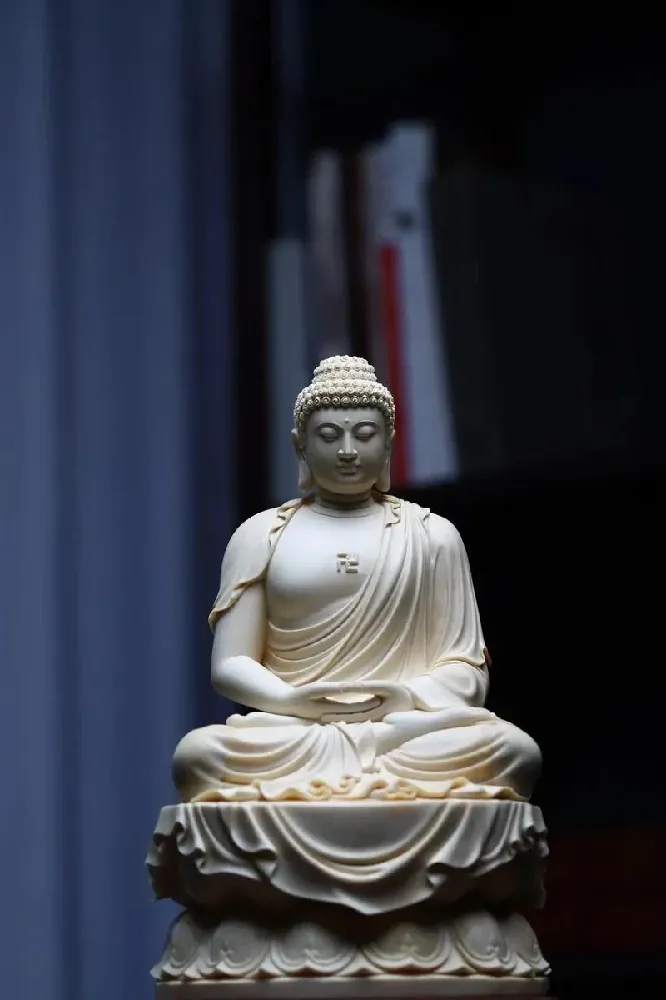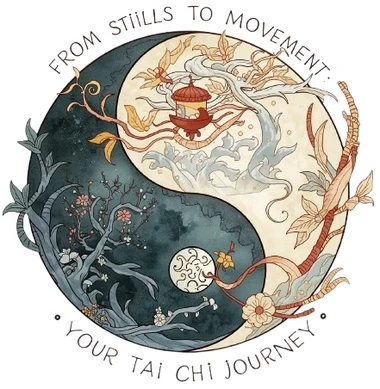The Secret to Tai Chi Isn't Movement—It's Your Mind
Forget what you've seen in slow-motion park videos. The real power of Tai Chi isn't in its graceful poses; it's in the invisible mental art of guiding your energy with your intention. This ancient practice is a living bridge connecting three pillars of Chinese wisdom:
- Confucian self-cultivation for discipline.
- Daoist wu wei for effortless action.
- Buddhist chan ding for laser-like focus.
Together, they forge a powerful system for body-mind dual cultivation that’s shockingly relevant to our modern lives. Think of it as internal qinggong—the art of cultivating a light body and a clear mind. Let's break down how it works.

Confucian Self-Cultivation: How Does Discipline Create Freedom?
You might think Confucianism is all about old-school rules and social etiquette. And you're not entirely wrong. But at its heart, it’s about building a strong moral character from the inside out. This isn't about restricting yourself; it's about creating a container so strong that true freedom can flow within it.
In Tai Chi, this "container" is the form itself. The precise movements, the specific angles—they provide the structure.
The Practice: Finding Yourself in the Form
So, how does this abstract philosophy show up in your Tai Chi practice? It’s in the details.
- The Ritual of the Bow: Before a Yang-style practitioner even moves, they perform the "Salute Fist" (抱拳礼). This isn't an empty gesture. It’s a moment of respect for your teacher, the lineage, and the practice itself. It’s Confucian "propriety" in action, grounding you before you begin.
- "Seek Within" When You Struggle: The Confucian idea of "introspection" (反求诸己) is your best friend when a pose feels wobbly. Instead of getting frustrated, you learn to ask: "Is my weight properly rooted? Is my shoulder tense? Is my mind wandering?" You stop blaming external factors and start tuning into yourself.
Consider this: A 2022 study in the Chinese Journal of Sports Medicine found that long-term Tai Chi practitioners saw their anxiety levels drop by 27%. Why? Because the disciplined, internal focus literally trains your nervous system to calm down.
This disciplined self-awareness is the first step. It builds the foundation. But what do you do once you have that structure? You learn to stop trying so hard.

Daoist Wu Wei: What If You Stopped Trying So Hard?
If you’ve ever forced a workout or "muscled through" a task, only to end up exhausted and sore, you understand the opposite of Wu Wei (无为). Often translated as "effortless action," Wu Wei is the art of aligning with the natural flow of things instead of fighting against them.
In Tai Chi, this is the golden rule: "Use intention, not muscular force" (用意不用力).
The Practice: Flowing Like Water
Trying to use brute force in Tai Chi is like trying to push a river—it’s exhausting and pointless. The Daoist way is to be like the water itself: yielding, adaptable, and incredibly powerful.
- The Magic of Silk-Reeling Energy: Chen-style Tai Chi uses something called "Silk-Reeling Energy" (缠丝劲). Imagine gently wringing out a wet towel. That continuous, spiraling motion? That’s the idea. You’re not punching; you’re generating power from the ground up through a wave-like, natural motion. It’s physics meeting philosophy.
- Breathe Like You Mean It: The command to "Sink Qi to the Dantian" (气沉丹田) is your key. It means breathing deep into your belly, not your chest. This diaphragmatic breathing is your body’s built-in "chill pill." It’s the physical trigger for a Wu Wei state—calm, centered, and ready to respond without panic.
Why is this a superpower today? In our always-on, hustle-culture world, Tai Chi’s "slowness" is a radical act. It’s a daily reminder that not all progress requires struggle. Sometimes, the most powerful thing you can do is to get out of your own way, breathe, and let things unfold.
The Result? Research in the journal Sports Science (2021) showed Tai Chi practitioners boosted their lung capacity by an average of 15%. By not forcing your breath, you actually become a more efficient breather. That’s the paradox of Wu Wei in action.
So, you have the discipline from Confucianism and the effortless flow from Daoism. Now, we need one final ingredient to tie it all together: unwavering focus.

Buddhist Chan Ding: Can You Find Total Calm While Moving?
Here’s the part that often surprises people: Tai Chi is a form of moving meditation. While it strengthens the body, its true magic might be how it trains the mind. This is where Buddhist Chan Ding (禅定)—often translated as meditative concentration—comes into play.
Chan Ding is the practice of calming the mind to achieve profound clarity and insight. Sounds like something you do on a cushion, right? But Tai Chi asks: What if you could cultivate that same unwavering focus while your body is in motion?
The Practice: Training Your "Mental Muscle"
The goal is "unifying form and spirit" (形神合一). You're not just going through the motions; you're fully present in each one.
- The Power of the Stance: Before you even move, you train in Zhan Zhuang (桩功), or "standing like a post." In a stance like Sun-style's "Three Bodies Posture" (三体式), you stand still, sink your weight, and "hold your intention at the dantian" (意守丹田). Your legs might burn, your mind will wander—but you keep bringing your focus back to your breath and your root. This is Ding Li (定力), the power of concentrated focus, and it's the foundational training of Chan Ding.
- Letting Go on the Go: As you flow through the form, you're not just fighting distractions; you're learning to "release attachments" to them. A thought about a work email arises? You acknowledge it and let it pass like a cloud, returning your focus to the slow, intentional sweep of your "Cloud Hands" movement.
The proof is in the science: A 2023 study in the Chinese Mental Health Journal found that consistent Tai Chi practice led to a 32% reduction in depressive symptoms. The moving meditation literally rewires your brain's habit loops of rumination and anxiety.
Why is this a game-changer today? In our world of endless notifications and multitasking, our attention is fractured. Tai Chi is the antidote. It’s a daily, active workout for your focus, training you to be here, now. It’s the same neural mechanism as mindfulness apps, but you're building that skill with your whole body.

The Ultimate Synthesis: What Does "Guiding Qi with Intention" Actually Feel Like?
So, we have three powerful philosophies. But how do they work together in the heat of the moment? This is the culmination: "Guiding Qi with Intention" (以意导气). This isn't a mystical, esoteric concept. It’s a practical, trainable skill.
Think of it like this:
- Confucianism gives you the score (the disciplined structure of the form).
- Buddhism gives you the focus to hear each note perfectly.
- Daoism teaches you how to play jazz—to improvise and flow within the structure.
When these three align, you're not just performing movements; you are orchestrating them from within. This is the essence of internal qinggong—a feeling of lightness, power, and effortless control.
Your Practical Checklist for Body-Mind Dual Cultivation
Ready to try it? This isn't about mastering a 108-move form. It's about applying the principle. Here’s your 3-step progression:
- 1. Build the Foundation with Stance Training (Zhan Zhuang).
What to do: Stand with your knees slightly bent, feet shoulder-width apart. Relax your shoulders. Place your hands lightly on your lower abdomen (the dantian). Breathe deeply into your belly.
The Intention: Your only job is to feel your feet rooted to the ground and your head lifting gently toward the sky. When your mind wanders, gently guide it back. This is Buddhist Ding Li meeting Confucian discipline.
- 2. Train Intention with a Single Movement (e.g., Cloud Hands).
What to do: Practice the simple, repetitive "Cloud Hands" movement slowly.
The Intention: Don't just move your arms. Visualize your intention (your Yi) leading the movement. Feel as if you are gently pushing through a dense medium like water. This is where you practice "Guiding Qi with Intention" directly, applying Daoist Wu Wei by using minimal muscular force.
- 3. Integrate Breath and Movement.
What to do: In any movement, start coordinating your breath. Inhale as you gather energy (e.g., drawing your hands in), exhale as you express it (e.g., pushing your hands out).
The Intention: This is "Breath in Harmony with the Dao." You are no longer thinking about the parts; you are the movement, and the breath is the tide you ride on. This is the pinnacle of Body-Mind Dual Cultivation.
Conclusion: So, Is Tai Chi an Ancient Answer to a Modern Problem?
Let's be honest. The world isn't getting slower. The demands on our attention and mental health are only increasing. We're looking for solutions everywhere—from productivity hacks to therapy, which are all valuable.
But what Tai Chi offers is something uniquely holistic. It doesn't ask you to escape your life to find peace. It gives you a tool to cultivate calm and resilience within the chaos.
- It’s Confucian discipline for when you need to show up and do the hard work.
- It’s Daoist Wu Wei for when you need to stop forcing and start flowing.
- It’s Buddhist Chan Ding for when your mind is a browser with 100 tabs open and you need to find the "close" button.
This isn't just exercise. It's a practical philosophy for modern living. In an age of AI and constant change, the most radical thing you can do is to master your own internal operating system. And that system runs on the timeless, powerful principle of guiding your life with a calm, focused, and purposeful intention.
How Can You Actually Use This "Ancient Wisdom" Today?
Let's cut to the chase. You're probably not planning to become a Kung Fu master or a Zen monk. So, how does this philosophy of "guiding qi with intention" translate off the mat and into your messy, real, 21st-century life?
The answer is simple: It's an operating system for your mind and body.
Think of your brain as the CEO—the "intention." Your body and nervous system are the company—the "qi." Most of us live with a frantic, micromanaging CEO shouting chaotic orders, leading to a stressed-out, inefficient company (hello, burnout and anxiety). Tai Chi trains the CEO to be calm, clear, and decisive, so the entire organization runs smoothly and effectively.
Here’s how to apply this in three key areas of your life.
1. In the Workplace: From Reactive to Strategic
You're in a high-stakes meeting. Your colleague criticizes your proposal. The old you might feel a surge of heat, tense up, and fire back a defensive email.
The Tai Chi Shift: Pause. Feel your feet flat on the floor (rooting yourself, just like in Zhan Zhuang). Take one deep, quiet belly breath (sinking the qi). This 3-second pause creates a gap between the stimulus and your response. Now, your "CEO" (intention) can choose a strategic, calm reply instead of a reactive one. You've just used Confucian discipline to manage your impulse and Daoist wu wei to avoid a forceful, damaging clash.
2. In Your Relationships: Listening as a Moving Meditation
How often are you truly listening to your partner or kids, and not just planning your response while they talk?
The Tai Chi Shift: Treat the conversation like a partner Tai Chi form. Your job is not to push or resist, but to "yield" and "listen" to their energy. Keep your own body relaxed (no crossed arms, no tense jaw). This physical openness signals to your brain to be mentally open. By focusing completely on their words—just like you focus on the flow of a movement—you're practicing Buddhist chan ding. The result? Deeper connection and less miscommunication.
3. For Personal Challenges: The "Cloud Hands" Approach to Overwhelm
Facing a massive, intimidating project? The natural reaction is to freeze or frantically try to do everything at once.
The Tai Chi Shift: Adopt the "Cloud Hands" mindset. This movement is continuous, repetitive, and simple. It doesn't rush.
- Break it down: What is the one small, repetitive, essential motion you can do right now? (e.g., "Just outline the first section.")
- Focus on the process: Don't stare at the mountain of the final project. Keep your intention only on the simple, immediate task in front of you.
- Keep moving: One small, completed task flows into the next. This is Daoist wu wei in its purest form: consistent, effortless action without struggle. You're not "forcing" the project to be done; you're allowing it to unfold through small, intentional steps.
The Final Word: Your Journey to a Lighter Way of Being
So, is Tai Chi just an exotic martial art for retirees? Absolutely not. It's a sophisticated and profoundly practical technology for living well.
The goal of this internal qinggong—this cultivation of lightness—isn't to make you float in the air. It's to make your spirit lighter. To replace the heavy burden of stress, reactivity, and distraction with the lightness of clarity, purpose, and calm power.
- You won't find the answer in a pill or a productivity hack.
- You will find it in the patient practice of uniting your mind and body.
- You will find it in the discipline to show up for yourself.
- You will find it in the wisdom to stop fighting reality.
- You will find it in the focus to be fully present in your own life.
The modern world needs less hustle and more harmony. It starts with you. It starts with your very next breath.
Your move.
FAQ
What is the core philosophy behind Tai Chi?
Tai Chi is built upon a unique blend of three Chinese philosophical traditions: the disciplined self-cultivation of Confucianism, the effortless action (wu wei) of Daoism, and the meditative focus (chan ding) of Buddhism. This fusion creates a holistic practice for body-mind dual cultivation, centered on the principle of "using intention to guide qi."
How does Tai Chi differ from yoga or other meditation practices?
While yoga often emphasizes physical flexibility and posture, and seated meditation focuses purely on the mind, Tai Chi is a moving meditation that uniquely integrates all three. It combines the structural awareness of Confucian discipline with the fluid, economical movement of Daoist wu wei and the present-moment focus of Buddhist mindfulness, making it a complete internal qinggong practice.
What are the proven mental health benefits of practicing Tai Chi?
Modern research validates what masters have taught for centuries. Studies show regular Tai Chi practice, through its emphasis on breath coordination and mental focus, can significantly reduce anxiety (by up to 27%) and depressive symptoms (by up to 32%). It's a powerful tool for stress management and enhancing overall mental clarity.
Can beginners really learn to "guide qi with intention"?
Absolutely. While it sounds advanced, "guiding qi" is a practical skill built from day one. It starts simply by using your mind (intention) to direct your movement and breath with relaxed focus. Beginners learn this through foundational stance training (Zhan Zhuang) and basic repetitive forms like Cloud Hands, which train the mind-body connection without overwhelming complexity.
What is "wu wei" (effortless action) in Tai Chi?
Wu wei is the Daoist principle of "action without strain." In practice, it means "using intention, not muscular force." Instead of forcing a movement with tense muscles, you learn to generate power from the ground up through relaxed, coordinated motion—like the spiral force (chan si jin) in Chen-style Tai Chi. This prevents injury and conserves energy.
How does Tai Chi's "body-mind dual cultivation" help in daily life?
The body-mind unity trained in Tai Chi is directly transferable. It teaches you to: Respond, don't react: Use the "pause" created by deep breathing to choose calm responses in stressful situations. Maintain focus: Apply the single-pointed concentration (ding li) from stance work to stay on task at work. Move efficiently: Apply the wu wei principle to tackle large projects with small, consistent, effortless actions instead of frantic force.
Is Tai Chi a form of qinggong?
Yes, Tai Chi is considered a supreme form of internal qinggong. While qinggong is often associated with the dramatic skill of "lightness," its true meaning is the cultivation of a light, agile, and resilient body and spirit. Tai Chi achieves this through its core practice of sinking qi, relaxing the joints, and using intention to direct energy, all of which create a profound sense of physical ease and mental buoyancy.
What is a simple way to start incorporating these philosophies today?
You can start right now with this 3-step "Standing Meditation" practice, which combines all three traditions: Posture (Confucian): Stand with feet shoulder-width, knees soft. This is your structure. Breath (Daoist): Breathe deeply into your belly, feeling your body relax with each exhale. This is wu wei. Focus (Buddhist): Gently hold your attention on the physical sensation of your feet connecting to the floor. When your mind wanders, gently guide it back. This is chan ding.
